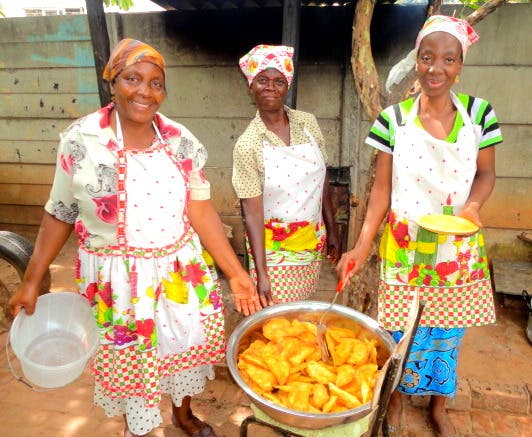
Evaluating the tangible impact of our lenders’ financial loans is an integral component of Lendwithcare’s (LWC) work. Between April and June 2016, LWC in partnership with the University of Portsmouth (UoP), conducted in-depth household surveys of 341 first-time borrowers of Lendwithcare’s microfinance partner in Zimbabwe, Thrive. Thrive’s mission is to ‘provide training and credit to women excluded from the mainstream financial sector in a manner that is both socially responsible and financially sustainable’[1]. Since all of Thrive’s clients are low-income, economically active women from urban and semi-urban areas in Harare, Chitungwiza and Whitecliff, the organisation plays a vital role in tackling financial exclusion.
First, a sample of 341 new Thrive clients and 157 non-clients were interviewed in the summer of 2016. As a follow up to this, UoP conducted a comparative study in 2017 by which time some of the clients were on their second or third loan cycle. The report’s purpose was a first cut attempt at measuring the impact of Thrive’s loans on its clients.
What makes Thrive distinctive as an MFI is that alongside providing loans, they additionally provide training to women on group formation, leadership, finance, business and most importantly on how to save money using group bank savings accounts. One of the most noteworthy findings of the UoP Report is the strong increase in the percentage of clients saving regularly, which rose from 53% to 80% combined with a reduction in the number of clients reporting that they were ‘never saving’ from 57 to 22.
Furthermore, despite immense economic turbulence in Zimbabwe during this period, the report highlighted that the clients in general had a positive attitude and demonstrated resilience in the face of adversity. Here are some positive illustrations from UoP’s comprehensive report prepared by Joana Afonso:
- 50% of clients had seen an improvement in the economic circumstances of their households between 2016 & 2017 (according to Thrive’s PAT[2] score)
- 81% of clients reported higher (50%) or similar (31%) sales compared with the previous year (and before receiving their first loan from Thrive)
- In keeping with Thrive’s believe that savings are the key to long term financial security, the report found significant improvements in terms of saving habits - 80% reported saving regularly compared to 53% the year before
-- 64% reported better quality of life and 77% of the clients stated that they would be willing to maintain their relationship with Thrive and apply for future loans.
This 2016-17 report has given us a preliminary indication of the effectiveness of lending to micro-entrepreneurs in Zimbabwe through Thrive. However, given the economic recession and political instability in Zimbabwe during the survey period, UoP recommends conducting a follow up survey in a more stable period so as to give us a clearer picture of the business and household living conditions of the women who have borrowed loans for their business activities from Thrive. Lendwithcare plans to interview the same clients in early 2019 to continue tracking any changes to their businesses and poverty levels.
By Shruti Balaji
Lendwithcare Volunteer
______________________________________________________________________________________________________________________
[1] Read more on http://www.thrivemicrofinance.com/
[1] As no external poverty scorecards were available for Zimbabwe, Thrive developed its own poverty index, THRIVE-PAT, using local benchmarks making the indicator regionally context-specific.